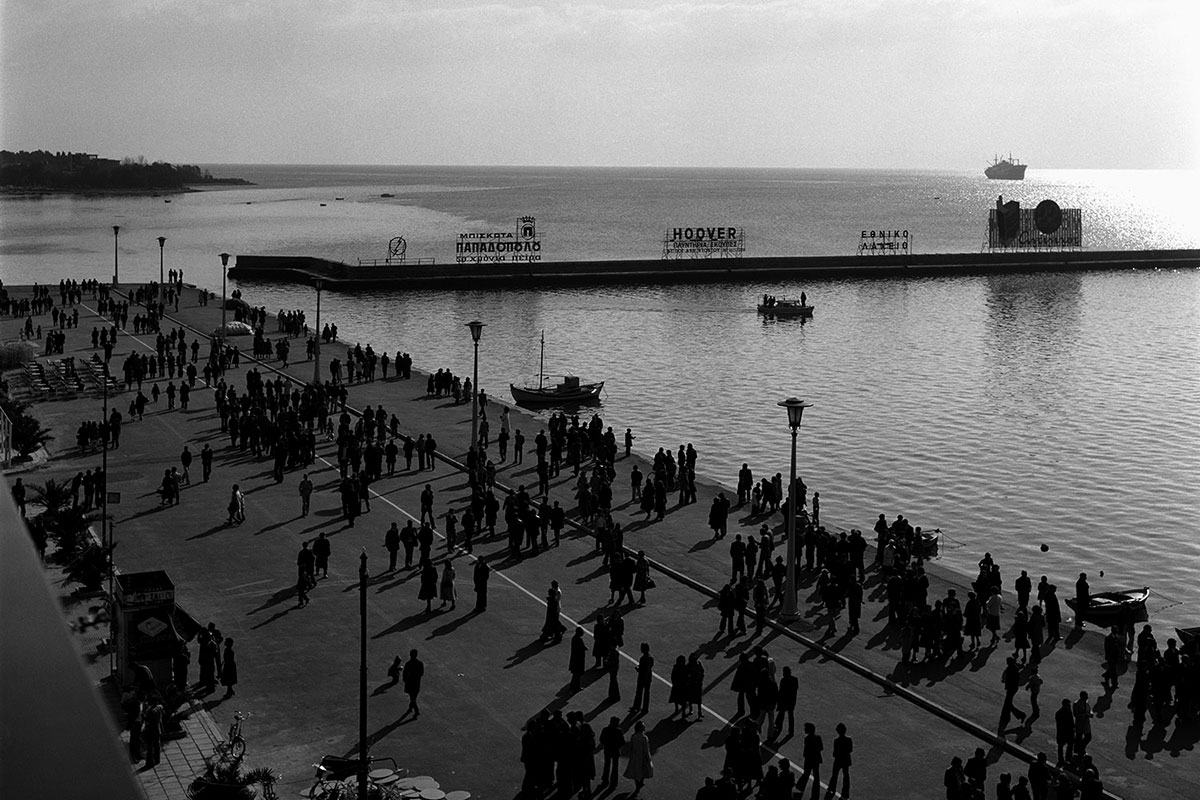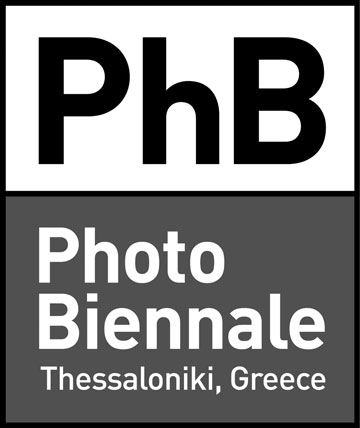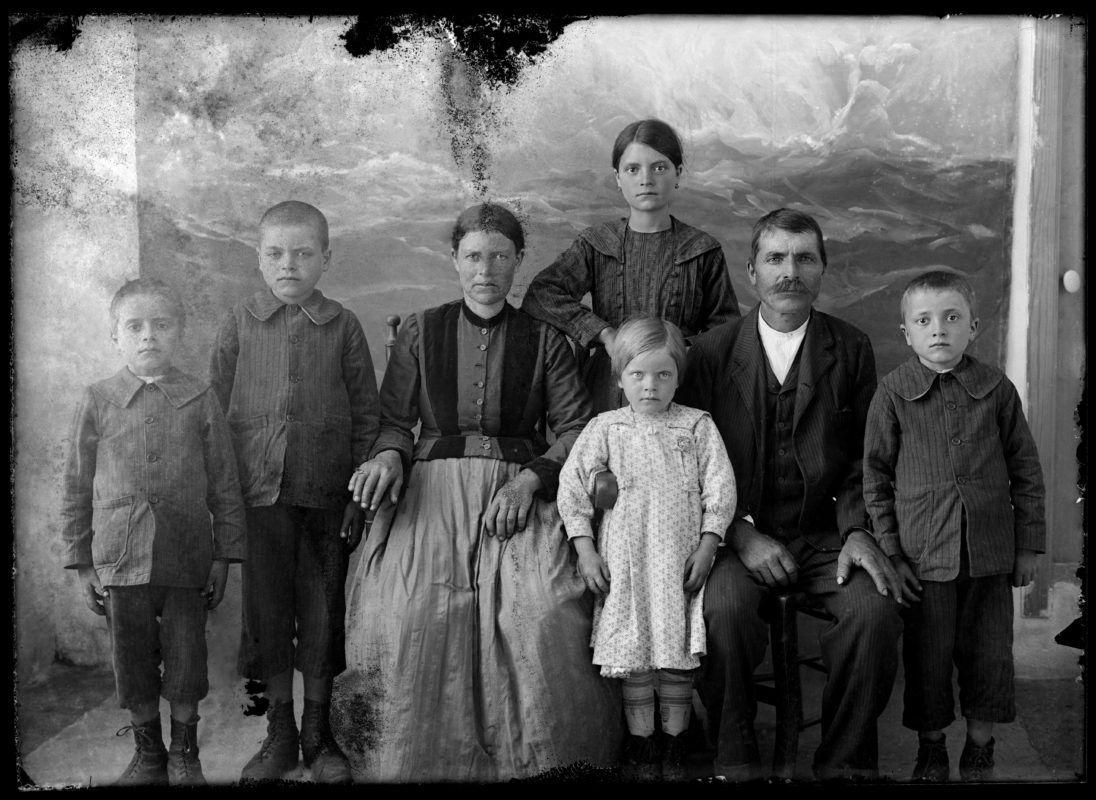
Two exhibitions that portray the Greek province and its people on a black and white scale during the 20th century are presented in the Thessaloniki PhotoBiennale 2018, organised by the Thessaloniki Museum of Photography.
A portrait of Volos | Dimitris Letsios
The unseen aspects of Volos through the lens of Dimitris Letsios are presented in “Dimitris Letsios: A portrait of Volos” exhibition, which opens on Wednesday, December 19, 2018 at 19:00 at the Folklife & Ethnological Museum of Macedonia Thrace and is organized by the Thessaloniki Museum of Photography in cooperation with the Volos City Museum.
The exhibition includes 50 photographs of postwar Volos, most of which have not been disclosed so far, while the album accompanying the exhibition includes 25 additional photos, forming a more complete depiction of the city from the lens of the renowned photographer.
Bio
Dimitris Letsios was born at Anakassia, Volos on 12 December 1910 and died in Volos on 17 January 2008. From an early age, he worked at the family bakery in Iolkou Street. His relationship with photography began in 1934. The photographer Babis Basdekis initiated him into the secrets of photography; nevertheless, he was largely self-taught. During the German occupation, he became the Volos president of the United Panhellenic Organisation of Youth (EPON), a Greek resistance organisation, and organised partisan art events in the mountains of the Pelion region. After the December 1944 events, he was arrested and exiled. He founded the Volos branch of the Greek Photographic Society (EFE) in 1956 and he also served as president of the Volos Film Club. His lifelong companion Athena Tzimerou was the key material and spiritual supporter for creating his extensive and varied photographic archive. His images have been featured in a large number of exhibitions in Volos and Thessaly, in EFE exhibitions, and in the retrospective exhibition dedicated to him at the Thessaloniki Museum of Photography in 2005, which subsequently travelled to Athens, Florina, Xanthi and Volos. There have also been released four books and a 30min documentary film dedicated to Letsios. His work celebrates the Greek countryside, with an emphasis on Pelion and the Thessalian plain, documenting almost all aspects of folk culture. Portraits and landscapes, everyday life scenes and snapshots compose an authentic panorama of postwar Greece which includes urban living, mainly in the city of Volos, making Letsios one of the most important figures in postwar Greek photography. The Dimitris Letsios archive is part of the permanent collection of the Thessaloniki Museum of Photography.
Dimitris Letsios: A portrait of Volos
Duration: 19/09 – 31/12/2018, Opening: 19/09/2018, 19:00
Venue: Folklife & Ethnological Museum of Macedonia Thrace
Opening hours: Mon, Tue, Fri, Sat, Sun 09:00-15:30, Wednesday 09:00-21:30
Co-organisation: Folklife & Ethnological Museum of Macedonia Thrace, Volos Museum of the City, Thessaloniki Museum of Photography
------------------------------------------------------------------------------
Faces of Kythera 1929-1938 – Panayotis Fatseas
Panayotis Fatseas (1888-1938), the first commercial photographer to practice on the island of Kythera, has been revealed as not merely an invaluable witness to his time, but also as a significant photographic artist of the first half of the 20th century. Fatseas’ negatives remained untouched from his death until 2002, when they were discovered by the photographer and photo historian John Stathatos, who rescued the archive and undertook its conservation.
The Fatseas archive consists of about 2,200 glass negative plates exposed between 1920 and 1938. The great majority of the images are formal portraits but also landscapes, outdoor scenes, dances and festivities, scenes of the procession of the icon of the Myrtidiotissa and other characteristic scenes of pre-war island life. The core of the Fatseas archive, quantitatively and qualitatively, is undoubtedly made up of his portraits. The Kytherians photographed by Fatseas do not seem like impersonal figures, symbolic perhaps of some nostalgically viewed past, but preserve their individual personalities.
Bio
Panayotis Fatseas (GR)
Panayotis Fatseas was born on the island of Kythera in 1888. In 1910 he emigrated to the United States of America, returning two years later upon the outbreak of the Balkan Wars. He brought with him a camera, and although he had not planned on a career in photography, the demand for portraits was such that in 1920 he opened a studio in the village of Livadi. He died in 1938, at the early age of fifty, leaving behind a valuable archive of some 2.200 glass negatives. Apart from studio portraits, it included landscapes, interiors, festivities, views of the traditional procession of the Myrtidiotissa icon and other images characteristic of the pre-war island life. The badly damaged negatives were rescued and restored by the photographer John Stathatos, resulting in a major exhibition at the Benaki Museum, Athens. In her review of the exhibition, art critic Margarita Pournara remarked that Panayotis Fatseas, the self-taught Kytherian, “could be included among the five major Greek photographers of the first half of the 20th century”.
John Stathatos
The photographer, writer and critic John Stathatos was born in Athens in 1947. He studied and was based in England from 1967 to 2002, and his personal work has been widely exhibited in Europe. He has curated major international events, including the Israel Photography Biennale and the Thessaloniki Photosynkyria, and his writings on photography and art have been published in numerous books, magazines and catalogues. He contributed significantly to the emergence of Greek photographic studies through the exhibitions, and associated catalogues, The Invention of Landscape: Greek photography and Greek landscape 1860-1995, Image and Icon: The New Greek Photography -the first in-depth critical study of contemporary Greek photography- and Ways of Telling: Photography and Narrative, as well as through researching and introducing the work of Andreas Embirikos, Maria Chroussaki and Panayotis Fatseas among others. In 2002 he founded the annual Kythera Photographic Encounters and the associated Conference on the History of Greek photography. His personal publications include The Book of Lost Cities (2005) and airs, waters, places (2009). His photographs, essays and texts can be consulted on www.stathatos.net.
Faces of Kythera 1929-1938
Duration: 26/09 – 20/10/2018, Opening: 26/09/2018, 19:00
Venue: Museum of Byzantine Culture
Opening hours: Daily 08:00-20:00
Co-organisation: Kythera Photographic Encounters, Thessaloniki Museum of Photography


